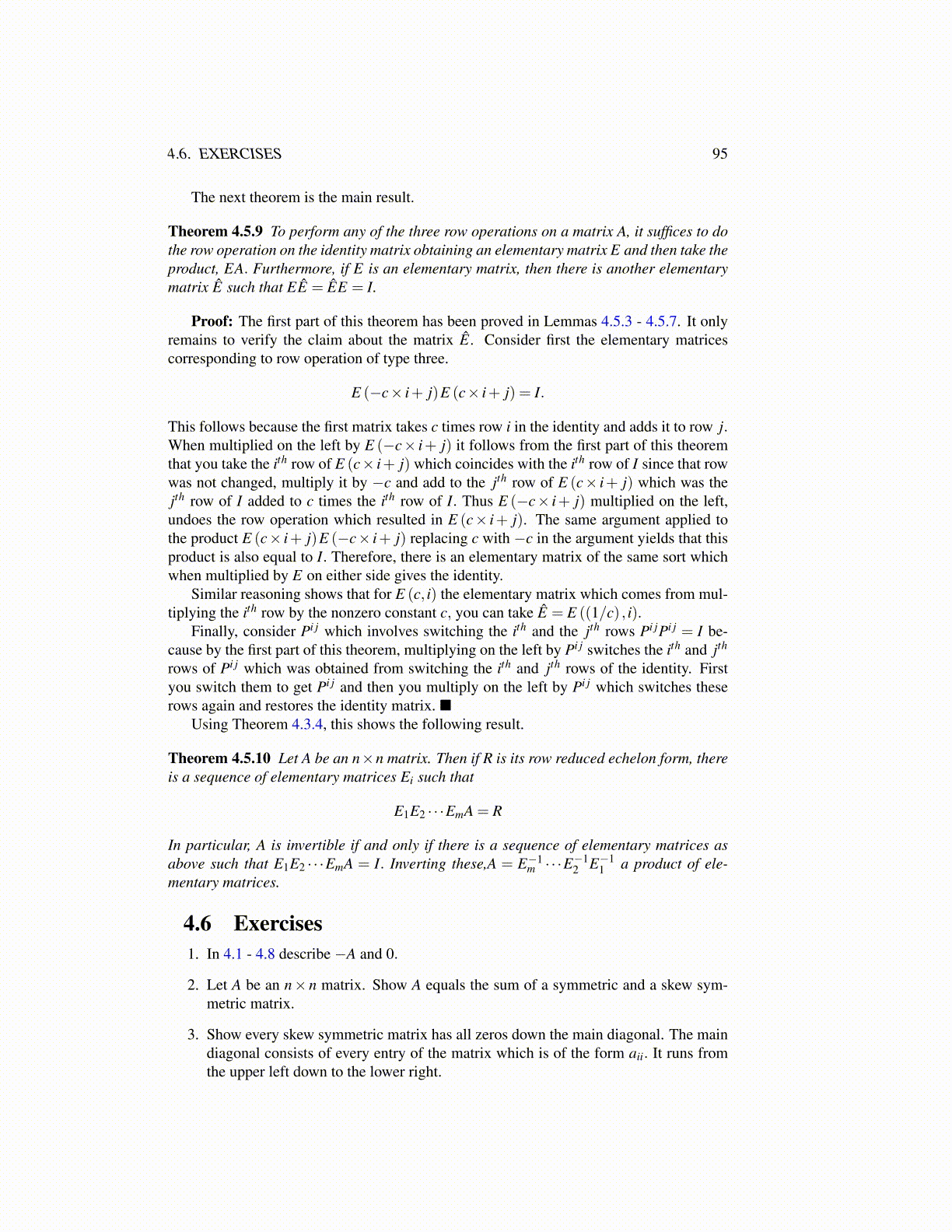
4.6. EXERCISES 95
The next theorem is the main result.
Theorem 4.5.9 To perform any of the three row operations on a matrix A, it suffices to dothe row operation on the identity matrix obtaining an elementary matrix E and then take theproduct, EA. Furthermore, if E is an elementary matrix, then there is another elementarymatrix Ê such that EÊ = ÊE = I.
Proof: The first part of this theorem has been proved in Lemmas 4.5.3 - 4.5.7. It onlyremains to verify the claim about the matrix Ê. Consider first the elementary matricescorresponding to row operation of type three.
E (−c× i+ j)E (c× i+ j) = I.
This follows because the first matrix takes c times row i in the identity and adds it to row j.When multiplied on the left by E (−c× i+ j) it follows from the first part of this theoremthat you take the ith row of E (c× i+ j) which coincides with the ith row of I since that rowwas not changed, multiply it by −c and add to the jth row of E (c× i+ j) which was thejth row of I added to c times the ith row of I. Thus E (−c× i+ j) multiplied on the left,undoes the row operation which resulted in E (c× i+ j). The same argument applied tothe product E (c× i+ j)E (−c× i+ j) replacing c with −c in the argument yields that thisproduct is also equal to I. Therefore, there is an elementary matrix of the same sort whichwhen multiplied by E on either side gives the identity.
Similar reasoning shows that for E (c, i) the elementary matrix which comes from mul-tiplying the ith row by the nonzero constant c, you can take Ê = E ((1/c) , i).
Finally, consider Pi j which involves switching the ith and the jth rows Pi jPi j = I be-cause by the first part of this theorem, multiplying on the left by Pi j switches the ith and jth
rows of Pi j which was obtained from switching the ith and jth rows of the identity. Firstyou switch them to get Pi j and then you multiply on the left by Pi j which switches theserows again and restores the identity matrix. ■
Using Theorem 4.3.4, this shows the following result.
Theorem 4.5.10 Let A be an n×n matrix. Then if R is its row reduced echelon form, thereis a sequence of elementary matrices Ei such that
E1E2 · · ·EmA = R
In particular, A is invertible if and only if there is a sequence of elementary matrices asabove such that E1E2 · · ·EmA = I. Inverting these,A = E−1
m · · ·E−12 E−1
1 a product of ele-mentary matrices.
4.6 Exercises1. In 4.1 - 4.8 describe −A and 0.
2. Let A be an n× n matrix. Show A equals the sum of a symmetric and a skew sym-metric matrix.
3. Show every skew symmetric matrix has all zeros down the main diagonal. The maindiagonal consists of every entry of the matrix which is of the form aii. It runs fromthe upper left down to the lower right.